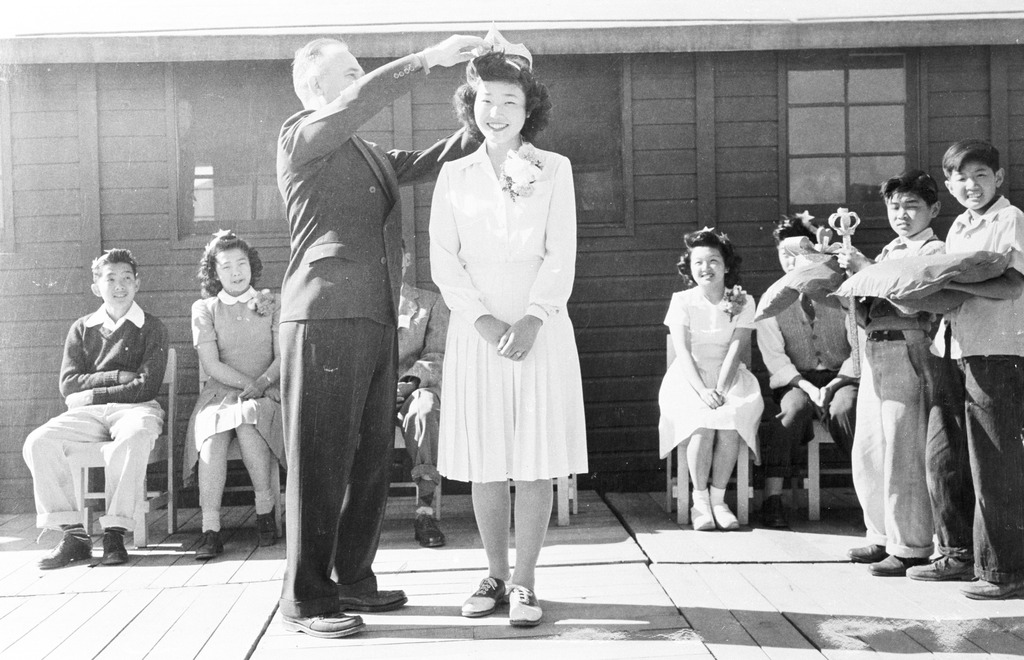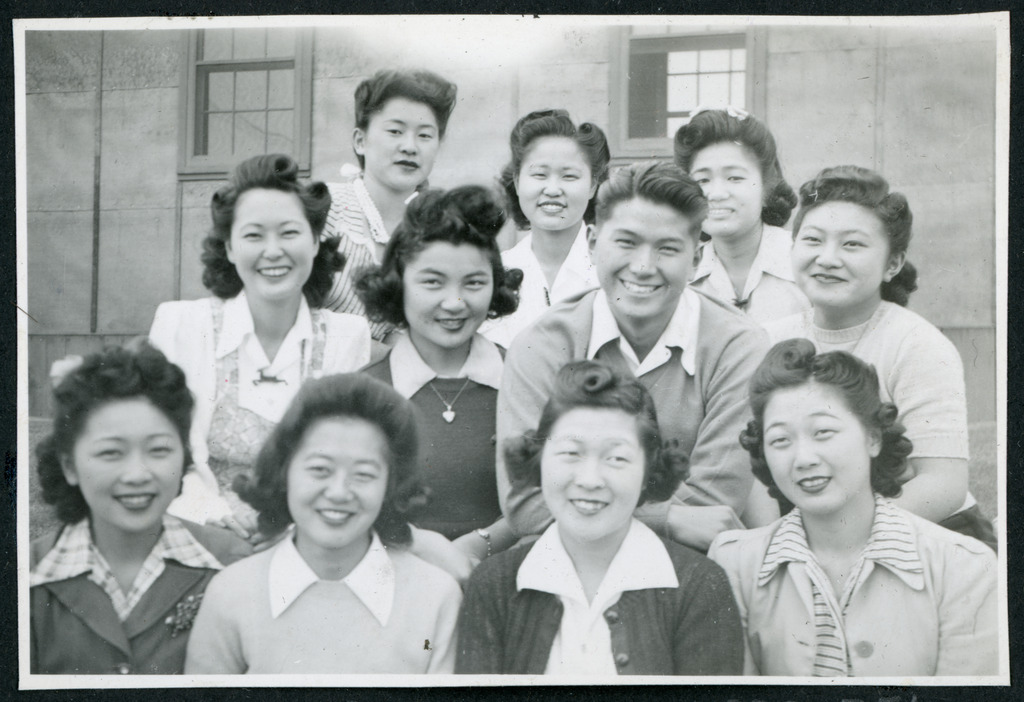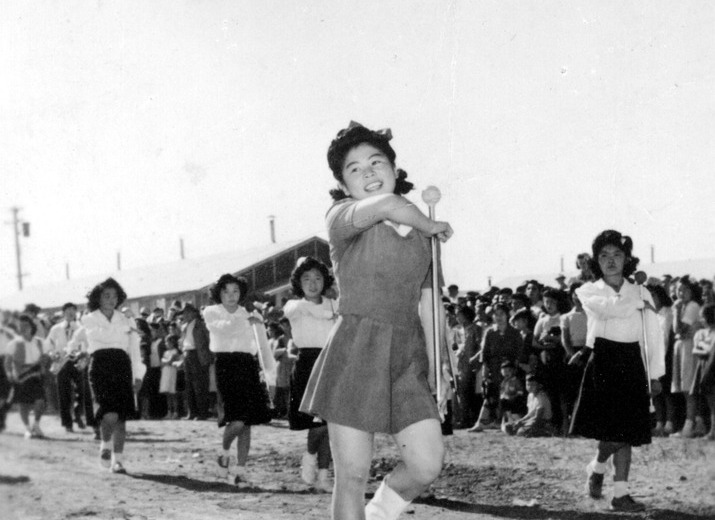May 10, 2023
Densho Content Director Brian Niiya responds to a question from a descendant of the camps who wonders why his Nisei father often shared “happy” memories of the wartime incarceration.
Fred Sakura writes:
I just finished reading several articles in Densho and one by you which I thought might relate to what my dad said about the internment experience. He said “camp was the best thing that happened!” I, for the life of me, don’t understand why he would state that.
Fred is certainly not alone in having a parent or other close relative say that “camp” was a good thing and being puzzled as to why they would say such a thing. For many years, my father-in-law would say that he had a great time in Manzanar as a teenager and that it was the best time of his life. During the Redress Movement period, Nikkei opponents of redress would often say similar things, with S. I. Hayakawa—who spent the war years in Chicago and thus did not go to camp himself—famously claiming that camp was “good” for Japanese Americans .
There are undoubtedly a number of things going on here. For one thing, there are actually quite a few reasons why Nisei in particular might remember some aspects of their incarceration fondly. For the most part, Nisei were either teenagers or young adults in camp, and that is generally a period people feel nostalgic for as they age, fondly recalling fun with friends, first love, being in their physical prime, and other milestones of that time of life.

Young teenagers like my father-in-law, Hank Umemoto, were too young to have suffered many material losses—especially if they came from poor backgrounds—but old enough to enjoy adventures with the many other Nisei of the same age that they encountered in camp. Older Nisei like Fred’s father might fondly recall more adult social activities such as dances or sports, or perhaps he was one of the many Nisei who met their future spouse in camp or even got married there. Some Nisei also recall getting opportunities in an all-Nikkei school setting that they likely would not have gotten on the outside, whether being class presidents, graduation speakers, or yearbook editors.
Prewar circumstances also played a role in how some perceived camp conditions. While the unpartitioned communal bathrooms were a nightmare to some, others found some of the conditions an improvement. In his Densho interview, Hank recalls that at home, “We had outhouses, right? At camp they had high tech flushing toilet.” He goes on to say that “to me personally, from where I was living and comparing with Manzanar, the barracks and the latrine, everything, it was good. Camp was good.” [1]
For others who came from isolated farming communities or areas where there were few other Japanese Americans, suddenly being among hundreds of fellow Nisei of the same age was for some daunting and for others exhilarating. The subsequent friendships that resulted were for many Nisei among the closest they would ever have. As Kay Endo put it in his Densho interview, “the relationship with the people that you met in camp… they become lasting friends even if you don’t see ’em for fifteen twenty years…. Unless probably if you’re in combat it would be different, but otherwise… that relationship is never destroyed.” Nikkei from rural areas were also freed from backbreaking farm labor, at least at first. [2]

But even for all of these reasons that Nisei might recall camp fondly, there’s clearly something else going on. While there were aspects of camp life that might have been enjoyable, you had still been forcibly removed from your home, however humble it might have been, and stuck into compounds surrounded by barbed wire and guard towers purely on the basis of your ancestry. And even those Nisei who call camp “good” or “the best” likely had parents, siblings, or other family members for whom it went less well. In Hank’s case, his two older brothers—who were over a decade older and already on their own and married—became so embittered by their treatment that they were among those who renounced their American citizenship and went to Japan after the war. One of them never set foot in the US again. Hank only saw this brother and his family once—when he was in the Korean War—for the remainder of their long lives. To call the camps “good” or “the best” is to willfully ignore stuff like this.
And this was clearly not something limited to a handful of Nisei. In her research on the impacts of the incarceration on Sansei, psychologist Donna Nagata found that most Sansei she interviewed told her that their parents emphasized the positive aspects of camp rather than the hardships, despite Sansei skepticism. As one Sansei told her, “My feeling was that there was much more to their experience than they wanted to reveal.” [3]
Nikkei psychologists and social workers such as Nagata, Amy Iwasaki Mass, and Satsuki Ina have helped us to understand some of what might be going on. Based on her own experiences and her years of counseling Japanese American clients, Iwasaki Mass’s oft-cited testimony before the Commission on Wartime Relocation and Internment of Civilians provided one explanation. “Until I was in my mid-thirties, I did not think that camp was a bad experience. When people asked me how it was to be put away, I said it was fun for me,” she began, before concluding that the “pain, trauma, and stress of the incarceration experience was so overwhelming, we used the psychological defense mechanisms of repression, denial, and rationalization to keep us from facing the truth.” [4]
In a later article, she wrote that humans “use defense mechanisms to protect against psychologically painful, unacceptable material and to maintain a sense of integrity and worth,” and cites rationalization as one such mechanism that helps to explain this phenomenon. “We adopted rationalization as a psychological defense, and it fit well with the propaganda of the government,” she wrote. “Statements such as ‘camp was good for us,’ ‘it saved us from being murdered by hostile whites,’ and ‘the government was doing it for our own good’ are examples of the use of rationalization as a psychological defense.” [5]
Nagata cites denial as another defense mechanism that “in the Nisei took various forms,” she wrote. “Some individuals minimized the significance of their losses or the trauma they had experienced, while others acknowledged the significance of the injustice but stated they did not retain lingering emotional responses to it.” [6]
And some Nisei may have consciously or unconsciously sought to protect their children from the racism they faced by telling them sanitized stories about camp.

Though the generation of older Nisei like Fred’s father have largely passed on, there are still many who were children in the camps who are still with us and still deal with the effects of that time. Mental health interventions such as the Children of the Camps Project begun by Ina in the 1990s have helped to address the needs of that generation, and we have seen other efforts aimed at Sansei and even Yonsei since. And greater openness and knowledge about the incarceration since the Redress Movement has no doubt helped many families better understand the trajectory their lives have taken.
Though he didn’t disavow his early assertions, I think Hank’s views did change over time. He later wrote a memoir and became a beloved docent at the Manzanar National Historic Site. While he still talked about the fun he had at Manzanar with his teenage friends, he also talked about the guards and the fences and difficulties his mother faced in a way that made it clear that what had happened was wrong. It is an evolution that I think many in the community have made.
This evolution perhaps came too late for people like Fred’s father. But as a community, we have to understand that people like him are also part of our history and, in his own way, are also casualties of the incarceration.
—
By Brian Niiya, Densho Content Director
References
- Hank Shozo Umemoto Interview I by Tom Ikeda, Segment 17, July 30,2010, Los Angeles, Densho Visual History Collection, Densho Digital Archive.
- Kay Endo Interview by Richard Potashin, Segment 12, July 24, 2010, Portland, Oregon, Manzanar National Historic Site Collection, Densho Digital Archive.
- Donna Nagata, Legacy of Injustice: Exploring the Cross-Generational Impact of the Japanese American Internment (New York: Plenum Publishing, 1993), 75.
- Amy Iwasaki Mass testimony before the Commission on Wartime Relocation and Internment of Civilians, Courtesy of the Sasha Hohri Collection, Densho Digital Repository. You can also view her testimony in a video produced by the 50 Objects project at https://www.youtube.com/watch?v=Ze6UV3vWJ6A.
- Amy Iwasaki Mass, “Psychological Effects of the Camps on Japanese Americans,” in Japanese Americans: From Relocation to Redress, ed. Roger Daniels, Sandra C. Taylor, and Harry H.L. Kitano (Salt Lake City: University of Utah Press, 1986), 160–61.
- Nagata, Legacy of Injustice, 33.
